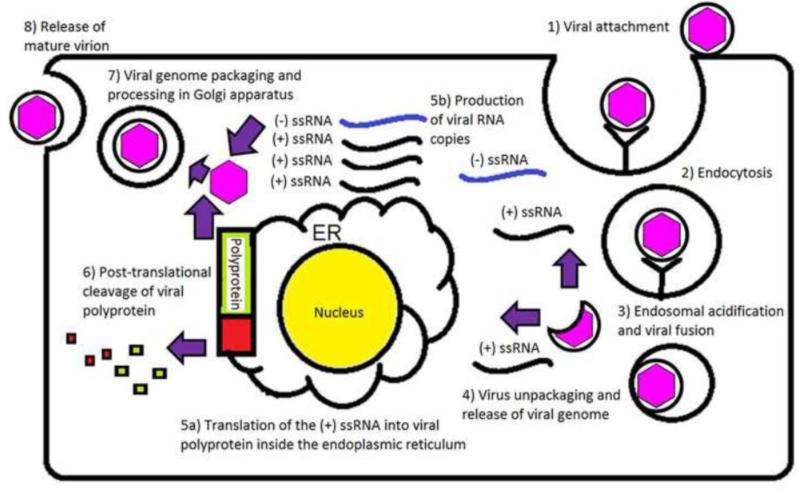Figure 5.
Flavivirus life cycle. Following attachment to the host extracellular surface (1), the virus is endocytosed (2) and encapsulated inside an endosomal vacuole. Acidification of the endosomal compartment alters the E protein causing the fusion of the virus with the endosome (3) facilitating virion release into the intracellular compartment where it is unpackaged (4). The released viral genome undergoes two different fates: the viral genome is either transported to the endoplasmic reticulum where it is translated into a polyprotein (5a) or converted into a negative-sense RNA to make positive-sense RNA copies (5b). The large polyprotein is post-translationally processed (6) producing structural and non-structural components important for virus assembly and maturation. The viral genome is packaged into a capsid and transported to the Golgi where it is coated by the E/M protein complex (7) to produce a mature virion (8).

